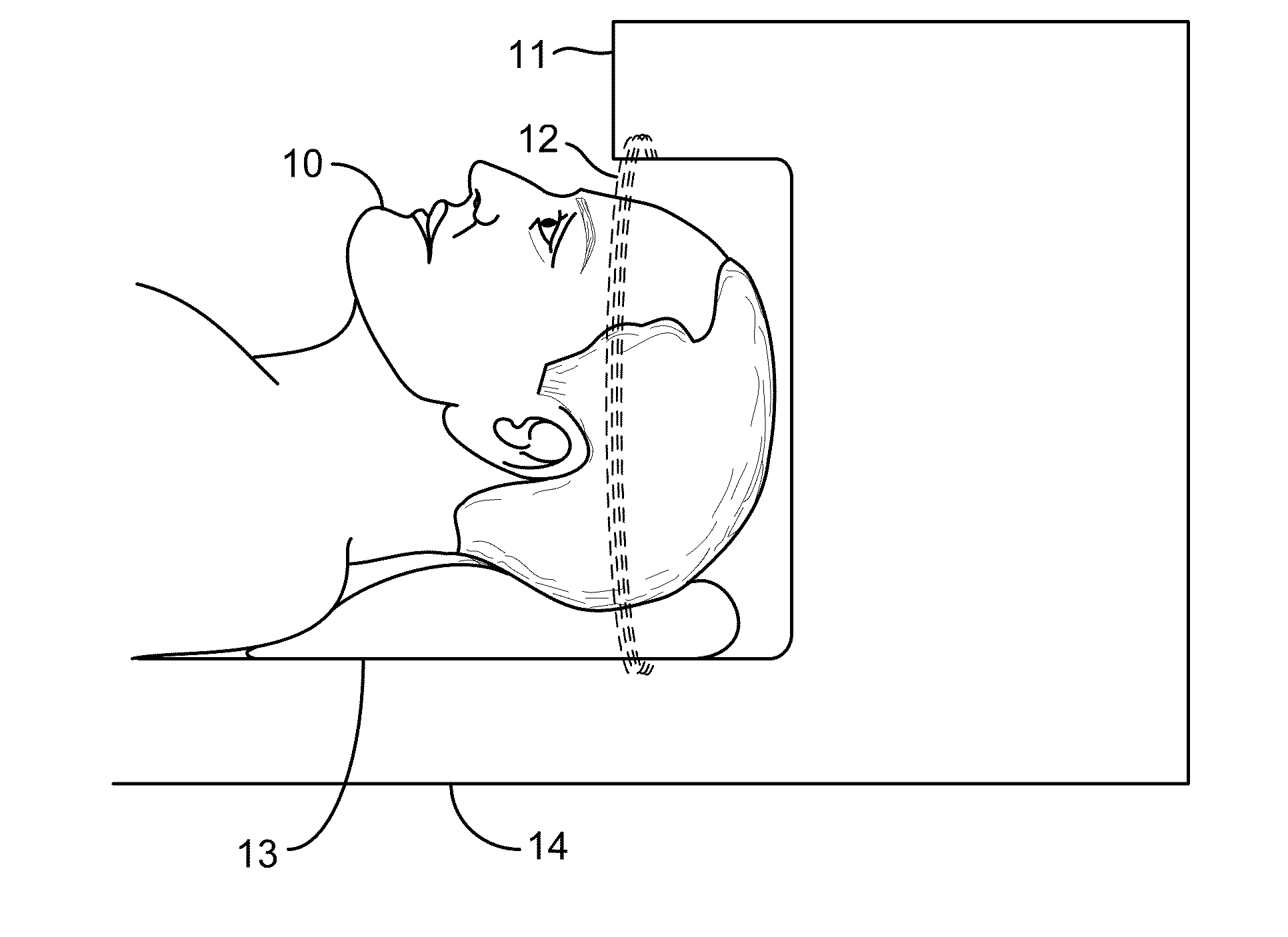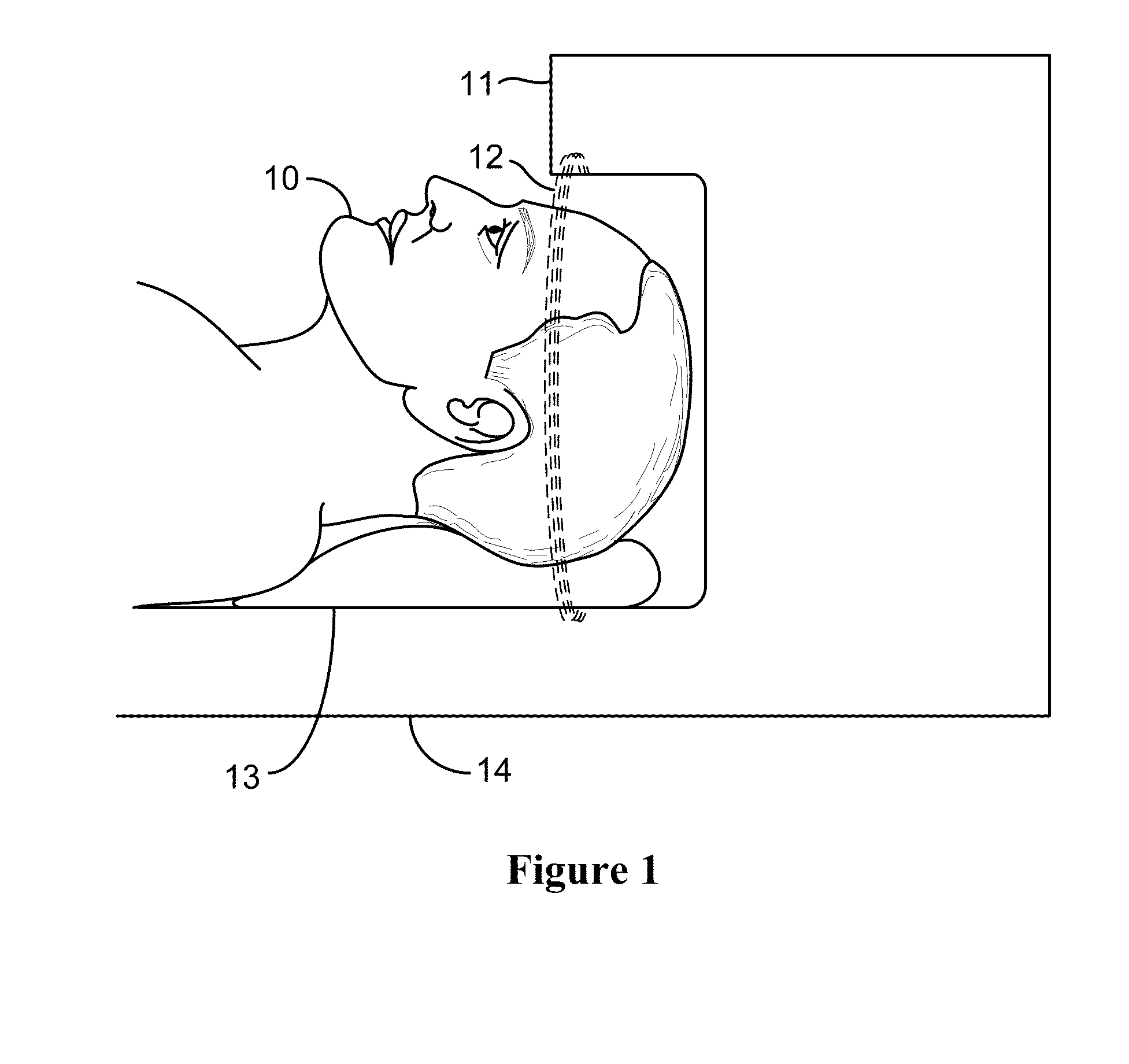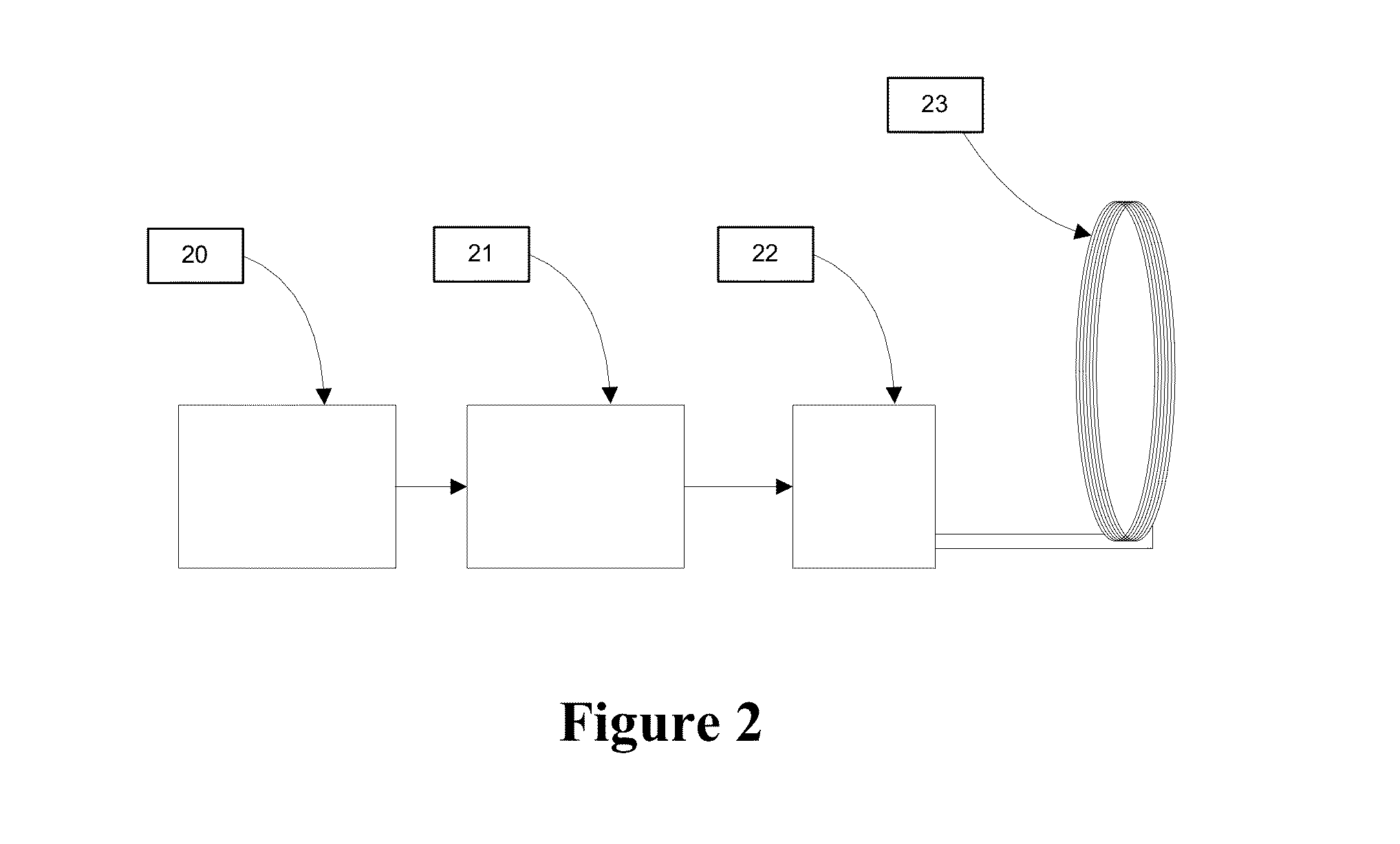Devices and methods of low frequency magnetic stimulation therapy
a low frequency magnetic stimulation and therapy device technology, applied in the field of low frequency magnetic stimulation therapy, can solve the problems of serious problems for affected subjects, their families, society, and neurodegenerative disorders, and achieve the effect of increasing blood flow in the cortex of subjects
- Summary
- Abstract
- Description
- Claims
- Application Information
AI Technical Summary
Benefits of technology
Problems solved by technology
Method used
Image
Examples
example 1
Characterization of the Effect of Therapy on Cerebral Oscillatory Activity
[0207]In order to illustrate a possible physical model that adequately characterizes synchronization, consider the qEEG power spectrum of a subject with moderate alpha band synchrony.
[0208]FIG. 9 shows the EEG signal in the time domain (top panel) and the associated power spectrum in the frequency domain (bottom panel). The top panel is the EEG waveform. The vertical axis of the top panel is amplitude measured in mV ranging from −40 mV at the bottom to 40 mV at the top, centered at zero mV. The horizontal axis of the top panel is time measured in seconds ranging from zero at the left to 6 seconds at the right. The bottom panel is the Fourier transform of the EEG waveform depicted in the top panel. The vertical axis is the energy in the signal and ranges from zero at the bottom to two at the top. The horizontal axis is frequency measured in Hz ranging from zero at the left to 35 Hz at the right. The power spect...
example 2
Sinusoidal Magnetic Stimulation Synchronized to the Average IAF
[0214]In some instances, a focal pulsatile stimulation waveform over the left dorsolateral prefrontal cortex at a frequency of 10 Hz commonly is used in treatment of MDD. However, pulsed fields do not consist of a pure 10 Hz signal. An example of a pulse is shown in FIG. 13. The vertical axis is the field strength measured in Tesla ranging from −1 Tesla at the bottom to 1 Tesla at the top, centered at zero. The horizontal axis is time ranging from −0.15 seconds at the left to 0.15 seconds at the right, centered at zero. The pulse has a period of 100 milli-seconds or ten pulses per second.
[0215]FIG. 14 depicts the waveform of a single pulse of FIG. 13 on an expanded time scale. The expanded time scale shows that the pulse comprises a single sinusoidal period. In FIG. 14, the vertical axis is the field strength measured in Tesla ranging from −1 Tesla at the bottom to 1 Tesla at the top, centered at zero. The waveform has a...
PUM
 Login to View More
Login to View More Abstract
Description
Claims
Application Information
 Login to View More
Login to View More - R&D
- Intellectual Property
- Life Sciences
- Materials
- Tech Scout
- Unparalleled Data Quality
- Higher Quality Content
- 60% Fewer Hallucinations
Browse by: Latest US Patents, China's latest patents, Technical Efficacy Thesaurus, Application Domain, Technology Topic, Popular Technical Reports.
© 2025 PatSnap. All rights reserved.Legal|Privacy policy|Modern Slavery Act Transparency Statement|Sitemap|About US| Contact US: help@patsnap.com



